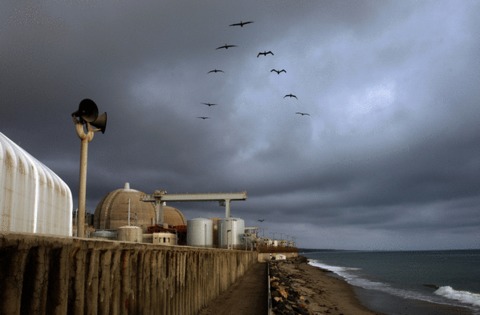Hot New
Lawsuit looks to block dismantlement of Southern California’s San Onofre nuclear plant
Lawsuit looks to block dismantlement of Southern California’s San Onofre nuclear plant

An advocacy group based in Del Mar is taking the California Coastal Commission to court, looking to stop the dismantlement work underway at the now-shuttered San Onofre Nuclear Generating Station.
Officials with the Samuel Lawrence Foundation say the commission should not have granted a permit to Southern California Edison, the majority owner of the plant, to take down buildings and infrastructure at the plant.
“We felt compelled to file this lawsuit because the Coastal Commission really didn’t do what they are supposed to do as an agency to protect the public interest, to protect the environment and the coast,” said Chelsi Sparti, Samuel Lawrence Foundation associate director.
The nine-page suit has been filed in Los Angeles County Superior Court and assigned to Judge Mitchell L. Beckloff. An opposition brief from the Coastal Commission is expected to be filed in May and a trial is anticipated to begin in late June.
A spokeswoman for the Coastal Commission declined comment, saying the commission does not discuss pending litigation.
Edison, which is listed as a party to the lawsuit, is also scheduled to file an opposition brief in May.Edison spokesman John Dobken said the commission “was thorough in its analysis and correct in its decision to approve the coastal development permit to safely dismantle the San Onofre nuclear plant. It was approved after serious review and thoughtful deliberation by the commission and its staff.”
The suit goes back to a meeting in October 2019 in which the Coastal Commission in a 9-0 vote approved a permit for Edison to begin demolition work at the plant, which has not produced electricity since 2012.
Among the issues Edison critics had with the permit centered on the planned demolition of two spent storage pools. Highly radioactive fuel rods were placed into the 40-feet-deep pools to be cooled before they being put into stainless steel canisters and then slowly moved to a “dry storage” facility at the north end of the plant.
Edison says the pools are not necessary now that all the canisters have been transferred to the dry storage facility but the Samuel Lawrence Foundation says the pools should remain in case something goes wrong.
“We need the ability to replace storage canisters as they degrade from age or damage,” foundation President Bart Ziegler said in a statement. “The only available facility is the spent fuel pool and the Coastal Commission is permitting the utility to destroy it.”
Edison told the commission that keeping the pools would “pose significant challenges” to decontaminate and dismantle the plant. Plus, the Nuclear Regulatory Commission has approved amendments to the plant’s operating license requiring that no used-up fuel goes into the pools once the waste has been transferred to the dry storage facility.
The storage pools have not yet been demolished.
The Coastal Commission approved the permit on the condition that Edison establish an enhanced inspection and maintenance program for the canisters, which cumulatively hold 3.55 million pounds of used-up nuclear fuel, or waste, that helped power the facility.
The utility complied and last July, the commission approved the program on a 10-0 vote.
Starting in 2024, Edison agrees to inspect two spent fuel storage canisters every five years and inspect a test canister every 2 1/2 years. The program also calls for Edison to apply a metallic overlay on canisters, using robotic devices, in case canisters get scratched.
The permit, which lasts 20 years, includes a special condition that allows the commission by 2035 to revisit whether the storage site should be moved to another location in case of rising sea levels, earthquake risks, potential canister damage or other scenarios.Despite the added measures, Coastal Commission members reluctantly approved the permit, saying their options were limited because the federal government has never opened a site where waste from commercial nuclear plants can be sent. About 80,000 metric tons of spent fuel has piled up at 121 sites in 35 states.
“This type of material has no business being in the coastal zone of California,” Coastal Commission chairman Steve Padilla said last July. “It is a no-win, I think, for all of us but I think under the circumstances, (voting yes is) the right step.”
The lawsuit says the commission’s decision violates the Coastal Act and “maximizes risk to life and property and threatens geologic stability along the bluffs” along the beach at San Onofre. The plant sits on an 85-acre chunk of Marine Corps Base Camp Pendleton owned by the Department of the Navy, overlooking the Pacific to its west and Interstate 5 to its east.
Dismantlement started in early 2020, with Edison officials expecting the effort to take about eight years to complete. Building demolition is scheduled to start in mid-March.
When finished, all that is expected to remain will be the two dry storage sites; a security building with personnel to look over the waste; a seawall 28 feet high, as measured at average low tide at San Onofre Beach; a walkway connecting two beaches north and south of the plant; and a switchyard with power lines.
